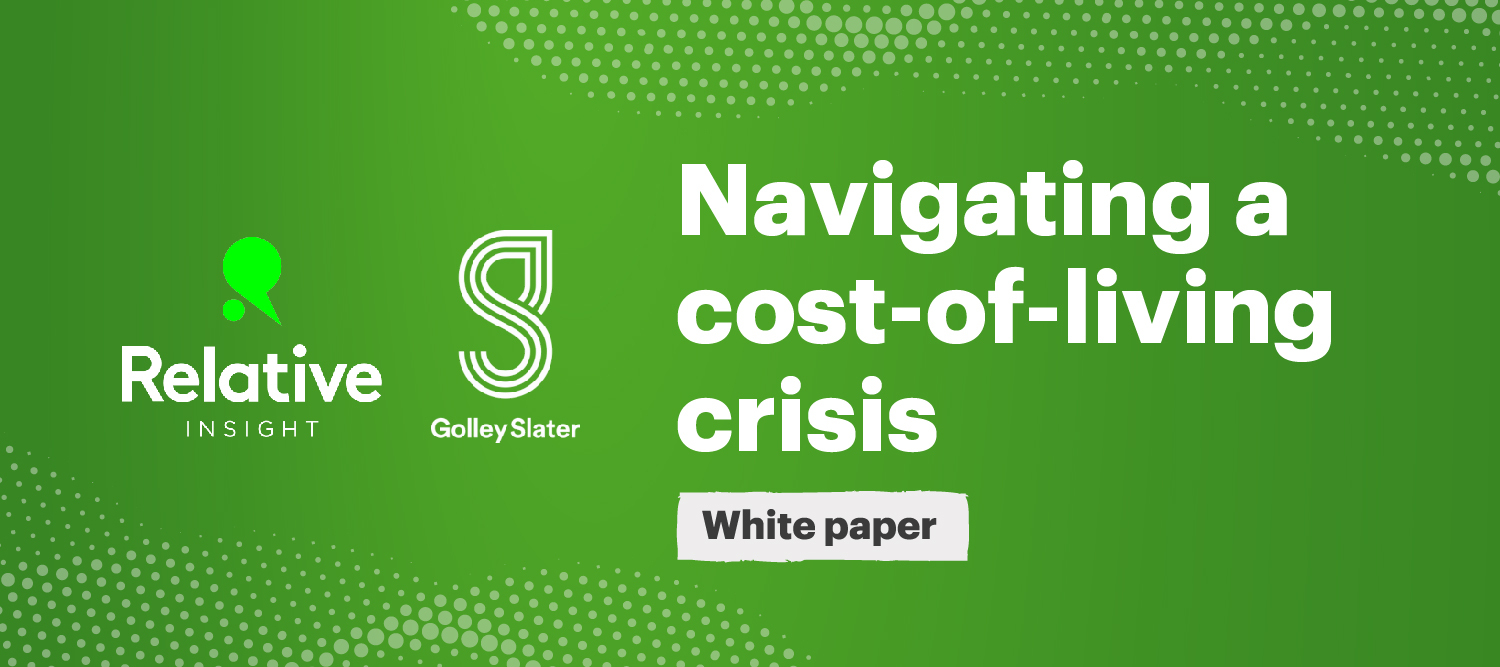Using cost of living research to understand shopper behavior

In the early part of 2022, consumers were aware that an inflationary shock was approaching and taking action. That was the key finding from Golley Slater’s cost of living research report – powered by research from Relative Insight . But what are shoppers talking about now that inflation has begun to bite?
To assess evolving consumer conversations around the cost of living, we once again worked with shopper marketing experts Golley Slater. The combination of our text analysis platform and the agency’s specialist knowledge enabled us to uncover the changes in sentiment and understand how consumers are reacting to rising prices.
You can find the full conclusions in the follow-up report – Navigating a cost-of-living crisis: The impact on shoppers & how brands can add value. Here are just some of the insights contained within the latest white paper.
A sense of impending doom
Consumers are dreading the coming months. That’s one of the painful conclusions from our cost of living research.
When compared to online conversations from March, people are 3.0x more likely to use the word ‘misery’ when discussing what to expect this winter. This pessimism comes from two sources: soaring energy bills and increasingly expensive groceries.
Over the course of the past few months, conversations have shifted from “turning off the hot tub” to people stating they’ll have to choose between heating or eating. Consumers highlighted this choice 2.3x more in July, while in August they were 1.6x more likely to discuss general rises in energy and car gas prices.
“People are choosing between eating and heating because of the energy bill crisis. People are losing their work because of it.“
“As our fixed electricity (no gas here) deal ends this week, I intend to be even more vigilant on energy use. We don’t use much in the summer months but will need to when the cooler weather arrives.“
Money saving measures
With this air of gloom circling around living costs, people are taking action to save money.
Between May and August, shoppers were 11.5x more likely to highlight how others can make their meals go further, 20.5x more likely to exchange deal codes and vouchers, and 7.0x more likely to talk about canceling subscriptions.
“Oddbox is offering £10 off your first purchase, meaning you can get their small veggie and fruit box for £0.99. It’s an amazing offer, the veggies lasted me for a week of meals.“
Thrift shopping is also in vogue. In July, consumers were 8.1x more likely to state they were going on thrift ‘missions’, as well as highlighting brands who were offering discount codes 9.0x more often.
“Codes are released on a Tuesday, I have been too late, the last few weeks code is only valid on a Monday and film has to be booked by Sunday evening.“
Greater cost of living impact on women
A fascinating insight which we surfaced through our cost of living research was the disproportionate impact the cost-of-living crisis on women.
People were 3.5x more likely to highlight this through September when compared to previous months, with discussions focusing on historic crises where women experienced greater hardship than men.
“Research by @wrc_ni showed that women have already paid the price for the last recession, and this must not be allowed to happen again. They have cut and cut but now there is nothing left to cut. Govt must #keepthelifeline and protect women, children & families from harm.“
“Women led the way through the pandemic and yet have paid the highest price: 1.5 million women lost their jobs in the first two months of the pandemic-induced recession.“
The full inflationary picture
These are just some of the takeaways from our cost of living market research. While consumers are concerned about the future, they’re also changing their spending habits to ensure that they’re best placed to ride out this storm.
How should brands respond to changing sentiment? Download the report to find out Golley Slater’s expert recommendations – backed up by our insights.